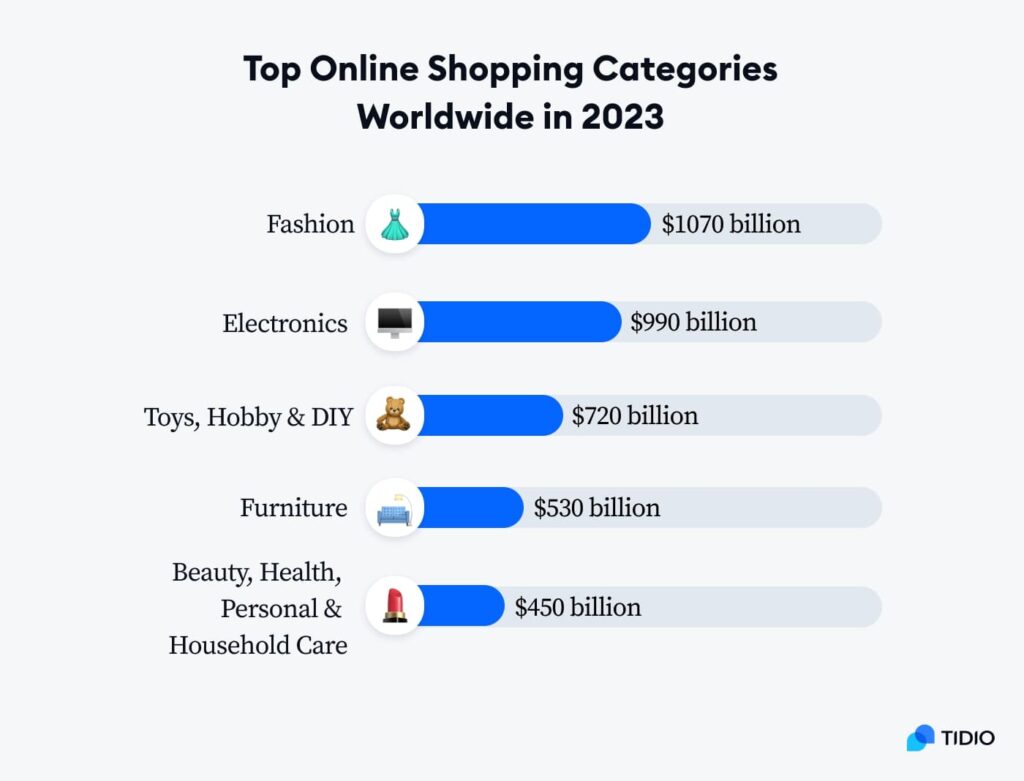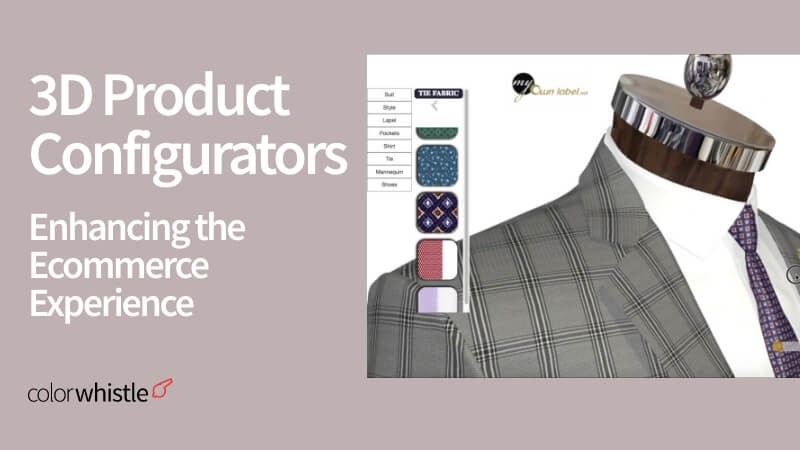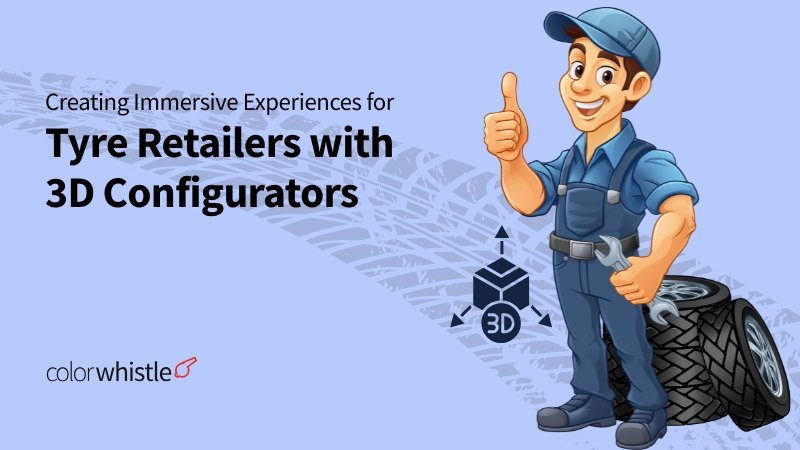How often do you overhear fellow consumers at an offline store say, “Let’s try it here but buy online.” Surprisingly, most consumers that we surveyed did or felt the same.
This situation is challenging the established ROPO phenomenon, research online and purchase offline, and turning it upside down. The buyer journey now begins offline but ends up online.
Paradoxical yet this is the reality of today’s e-commerce customer journey.
We know for the fact that 3 out of 4 consumers make at least one online purchase each month. Consumers are buying online due to multiple choices, and cheaper options when compared to their nearby physical store with a limited supply base.
This redraws our attention to user experience (UX) for the success of ecommerce. As online shopping became increasingly popular, competition grew, and customers’ expectations evolved.
The future of e-commerce customer experience demands 3D product configurators (or 3D customizers) alongside 3D visualizers, delivering a more personalized ecommerce shopping experience.
In this blog post, we will explore different possibilities of adding 3D product configurators for top five online shopping categories – fashion, electronics, beauty & personal care, DIY, and furniture – for a better e-commerce experience.
Recreating Live Shopping Experience in Ecommerce 3D Product Configurators
The current user journey of online shoppers, while convenient and widely adopted, still lacks certain elements that can enhance their overall experience and bridge the gap between online and in-store shopping.
So, what is lacking in the current e-commerce user journey?
- Hyper-Personalization
- Instant Gratification
- Multi-Sensory Experience
- Genuine Social Interaction and Validation
- Serendipity and Discovery
1. Personalization
- While many e-commerce platforms offer personalized product recommendations based on browsing and purchase history, there is still room for improvement.
- The user journey often lacks a deeper level of personalization that considers individual preferences, context, and intent.
2. Social Interaction and Validation
- Shopping is often a social activity where friends and family provide opinions and feedback.
- Online shopping lacks the real-time social interaction that comes with shopping in physical stores. Display of user reviews and ratings may or may not solve it.
3. Instant Gratification
- In-store shopping provides the instant satisfaction of taking the purchased item home immediately.
- Whereas e-commerce offers convenience, the delay between purchase and product delivery can be a drawback.
4. Multi-Sensory Experience
- Physical stores engage multiple senses – sight, touch, sound, and sometimes even smell – which contribute to a more immersive shopping experience.
- E-commerce typically focuses primarily on visual and written information.
5. Serendipity and Discovery
- Online shopping often revolves around specific searches or known product names.
- E-commerce might lack the serendipitous discovery of new products or brands that can happen while browsing physical stores.
Also Read
In response to these limitations, emerging technologies like augmented reality (AR), virtual reality (VR), and 3D product configurators are being integrated into e-commerce to address some of these gaps and provide the best e-commerce shopping experience.
What are 3D Product Configurators for eCommerce?
3D product configurators are interactive digital tools that allow online shoppers to customize and visualize products in a virtual environment.
They offer a dynamic and immersive way for users to personalize various aspects of a product, such as colors, materials, textures, sizes, features, and configurations, in real time.
The configurator’s role in enhancing the user journey of online shoppers is precisely to help them make more informed purchasing decisions.
Impact of 3D Product Customizers on E-Commerce Customer Journey
- Threekit found that 72% of shoppers are more likely to purchase a product after using a 3D configurator.
- 3D Source found that 58% of shoppers are more likely to return to a retailer that offers a 3D configurator.
- McKinsey found that retailers can reduce product returns by up to 25% by using 3D configurators.
Also Read
The given infographics also encourage businesses in the top online shopping categories to invest in a better e-commerce experience.

E-commerce businesses that leverage 3D product configurators can create a deeper connection with their customers, reduce returns due to misunderstandings, and ultimately drive higher customer engagement and conversion rates.
FASHION E-COMMERCE: Using 3D Customizers
Here’s how online fashion brands can make the most of 3D customizers:
1. Virtual Fitting Rooms: Implement virtual try-on experiences where customers can upload their photos or use their device’s camera to see how different clothing items look on them.
2. Integration with Augmented Reality (AR): Combine 3D customizers with AR technology to offer virtual try-on experiences for eyewear, jewelry, and other accessories. Users can see how these items look on themselves in real-time.
3. Mix-and-Match Outfits: Enable customers to mix and match different clothing items to create complete outfits. This encourages users to explore different combinations and accessories, ultimately leading to more sales.
4. Interactive Accessories: Showcase accessories like jewelry, bags, and scarves in 3D customizers. Users can rotate and zoom in to examine intricate details and visualize how they will complement their outfits.
5. Fabric and Texture Exploration: Let customers zoom in to see the texture and quality of fabrics up close. This helps build trust and confidence in the product’s materials.
6. 360-degree Views: Allow users to view clothing items from all angles to understand how they drape and fit. This simulates the in-store experience where customers can touch and inspect products.
7. Realistic Material Rendering: Implement advanced rendering techniques to accurately represent different materials and fabrics. Users can see how satin, denim, leather, and other materials will look in various lighting conditions.
8. Personalized Recommendations: Based on the customer’s customization choices and preferences, offer personalized product recommendations for complementary items. This encourages cross-selling and upselling.
9. Interactive Lookbooks: Curate interactive lookbooks where users can click on different items to explore their details and customize them directly within the lookbook.
10. Collaborations with Designers: Collaborate with fashion designers or influencers to create exclusive collections that users can customize using the 3D customizers.
Also Read
ELECTRONICS E-COMMERCE: Using 3D Configurators
Here’s how electronics brands can utilize 3D configurators effectively:
1. Device Color and Finish Options: Offer a range of color and finish options for laptops, smartphones, and other electronics.
2. Augmented Reality (AR) Integration: Integrate AR technology to allow users to visualize how electronic products will fit into their environment.
3. Realistic Portrayal of Features: Using detailed 3D models, users can explore ports, buttons, and interfaces in detail.
4. Educational Content: Provide tooltips or explanations for technical terms and specifications, helping users make informed decisions.
5. Simulated Screen Displays: Showcase how software interfaces and screen displays will look on laptops, tablets, and other devices.
6. Real-Time Price Updates: As users customize electronics, display real-time updates on the price based on the selected components and features.
7. Accessories and Add-Ons: Users can see how accessories like cases, chargers, and docking stations enhance the device. Guide users in choosing compatible accessories or components to ensure a seamless setup.
8. Visualize Performance Impact: Show users how their customization choices affect the performance metrics of the device. For instance, changing the graphics card can demonstrate gaming performance improvements.
9. Comparative Configurations: Allow users to compare different configurations side by side to make informed decisions about which electronics setup best suits their needs.
10. Interactive Demos: Provide interactive demos for features like touchscreens, rotating screens, or detachable keyboards, allowing users to experience the functionality firsthand.
11. 360-Degree Views: Provide 360-degree views of electronic products, allowing users to examine the device from every angle. This helps them understand the design and layout.
Also Read
BEAUTY, PERSONAL CARE E-COMMERCE: Using 3D Product Customizers
Here’s how these industries can utilize 3D configurators effectively:
1. Virtual Try-On for Makeup: Implement AR-based virtual try-on features for cosmetics. Users can upload a photo or use their device’s camera to see how different makeup products like lipstick, eyeshadow, and foundation will look on their skin tone.
2. Custom Skincare Regimens: Allow users to build personalized skincare routines by selecting products based on their skin type, concerns, and preferences. Provide recommendations for morning and night routines.
3. Haircare Product Recommendations: Create a configurator that suggests haircare products based on the user’s hair type, texture, and concerns, such as frizz, volume, or color treatment.
4. Fragrance Customization: Offer the ability to create custom fragrances by selecting different notes and concentrations. Users can design their unique scent combinations.
5. Personalized Hygiene Kits: Enable users to build personalized hygiene kits by choosing products like soap, body wash, lotion, and deodorant based on their preferences and sensitivities.
6. Skincare Ingredient Customization: Allow users to customize skincare products by selecting specific ingredients that address their unique skin concerns, such as acne, aging, or dryness.
7. Visualizing Texture and Consistency: Showcase the texture and consistency of beauty products using 3D models. Users can see how creams, serums, and gels look and feel.
8. Before-and-After Visualizations: Show users before-and-after visualizations of how certain products, such as skincare or haircare, can potentially transform their appearance.
9. Matching Shades and Tones: Assist users in finding the perfect shade of products like foundation, concealer, and tinted moisturizer by offering color-matching features.
10. Interactive Nail Art Design: Provide a nail art configurator that lets users design and visualize various nail polish colors and patterns before purchasing.
3D Sales Configuration for Enhancing B2B E-Commerce Customer Journey
Enough of B2C e-commerce, 3D product configurators can also revolutionize the B2B e-commerce customer journey.
The most disturbing pain point in the B2B user journey for online shoppers is the delayed quotation process.
B2B e-commerce must invest in a 3D sales configurator or Configure-Price-Quote (CPQ) configurator.
A CPQ configurator can dynamically adjust the price in real-time as customers make customization choices. This ensures that the price accurately reflects the selected features and quantities, reducing confusion.
Further, the 3D sales configurator can integrate with various B2B systems such as inventory management, procurement, ERP, and CRM software, ensuring data consistency and accuracy. It can accommodate various payment methods, including purchase orders, invoices, and credit card payments.
Overcoming Limitations of Existing Website 3D Product Configurators
Firstly, let’s understand some of the limitations that current 3D configurator software might suffer from,
1. Inaccurate Scaling: A 3D furniture configurator that doesn’t accurately represent the size of customized items in relation to the user’s real-world environment, causing unexpected sizing issues upon delivery.
2. Inadequate Cross-Product Interactions: A home furniture configurator that doesn’t show how different customized pieces interact or match with each other, creating an incohesive design concept.
3. Unclear Product Representation: A fashion configurator where the customized clothing items don’t accurately drape on the virtual model, resulting in an unrealistic portrayal of how the clothes would fit.
4. Limited Customization or Configurable Options: A 3D furniture configurator that only allows users to choose from a small set of predefined colors and materials, restricting their ability to fully personalize the product.
5. Slow Rendering Speed: An online shoe configurator that takes a significant time to render the selected color and design options, causes frustration for users.
6. Unrealistic Texture Mapping: A car configurator where the selected paint color doesn’t accurately reflect real-world lighting conditions, making the car appear too glossy or too matte.
Now, here is a showcase of technology frameworks and tools that can be used to overcome the limitations of 3D product configurators and provide users with more seamless and immersive customization experiences.
Also Read
- Provide real-time feedback: WebGL Frameworks (Three.js, Babylon.js), Real-Time Collaboration Tools (Miro, Figma)
- Device & screen compatibility: Responsive Web Design Frameworks (Bootstrap, Foundation), 3D Configurator SDKs (Threekit, Cappasity SDK)
- Accurate textures and materials: 3D Modeling and Animation Tools (Blender, Maya, Substance Painter)
- Improve rendering speed: Unity3D and Unreal Engine, Performance Optimization Libraries (Glad, GLTF-Pipeline), Cloud Rendering Services (Amazon EC2, Google Cloud)
- AR and VR Integration (ARCore, ARKit, WebXR), AR Visualization Platforms (Vuforia, AR.js)
- Cross-product interactions: Interactive Physics Engines (PhysX, Cannon.js) for
Looking for E-Commerce 3D Configurators / Tech Partners?
3D product customization ideas for e-commerce are only as good as their implementation.
Exploring whether to develop solutions in-house or opt for third-party solutions will determine how well your ideas get to life and elevate the e-commerce experience.
If you have a 3D product configurator project in mind, feel free to learn more about us.
ColorWhistle is a full-stack agency with experienced tech talents to design and develop woocommerce 3D product configurators and more.
To ensure the ongoing success and optimal performance of your e-commerce store, we also provide a comprehensive checklist for E-commerce store maintenance. This checklist covers essential aspects such as regular updates, security checks, performance optimization, and more.
You can always reach out to us with your ideas and requirements to get a suitable tech solution. Call us at +1 (210) 787-3600 anytime or simply drop a message here.
What’s Next?
Now that you’ve had the chance to explore our blog, it’s time to take the next step and see what opportunities await!





